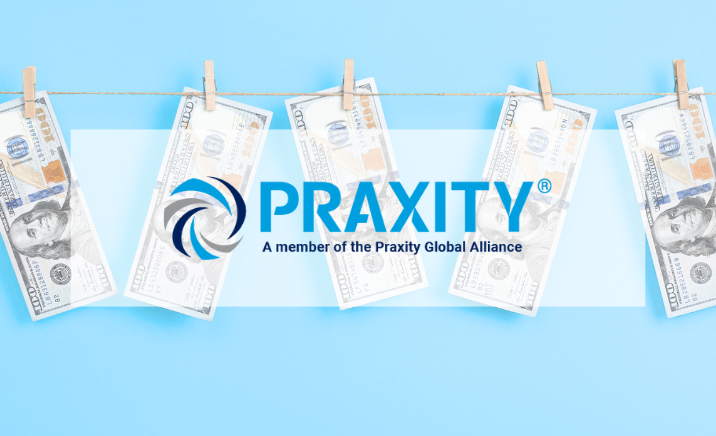Regional Review – Europe 2024
16 Sept 2024
Europe and the Eurozone remain crucial areas of global business, with changes and trends here often setting the tone for the rest of the world. Damien Lepert, Partner at Talenz Toadenn of France, leads us through some of the material concerns in the major player of France and across the continent as whole. French companies face the challenge of implementing the Corporate Sustainability Reporting Directive (CSRD)
The European Non-Financial Reporting Directive (NFRD), published in 2014, introduced an innovative obligation for European companies, involving reporting on non-financial aspects. This regulation has recently become much tougher as the Corporate Sustainability Reporting Directive (CSRD) has come into force. A real challenge for European companies.
(Before) The NFRD directive
Published in 2014 by the European Union, this directive was transposed into French law in 2017 and gave rise to the introduction of an annual extra-financial performance declaration (DPEF), made mandatory in France from 2018 onwards.
After several years in operation, the DPEF has been the subject of a number of comments and criticisms, including:
-
A limited scope, insofar as in France only
-
companies incorporated as Société Anonyme, Société en Commandites par Actions and Sociétés Européennes (relatively rare legal forms), with sales in excess of 100 million euros (excluding VAT) and 500 employees, and
-
listed companies (public interest entities) exceeding two of the following 3 thresholds: 250 employees, €20m balance sheet total, €40m turnover
-
The non-existence of precise standards for the information to be published, leaving issuers significant leeway and resulting in great disparity in the extra-financial reports published, and therefore an inability to compare performance
-
An approach based on a simple financial materiality analysis
-
Only companies and groups headquartered in the EU were affected; a company operating in Europe, but not headquartered there, could therefore escape the provisions of the regulation.
-
The data may not be reliable, as not all EU countries have set up procedures for independent third-party verification (Note: Verification by an independent third-party organisation has been in force in France since the beginning).
(Image: Damien Lepert, Partner at Talenz Toadenn of France)

The CSRD Directive
In 2019, the European Union concluded the European Green Pact, with the aim of achieving Europe-wide carbon neutrality by 2050.
In the wake of this pact, 2 founding texts appeared: the Taxonomy Regulation (EU 2020/852) in 2020 and the CSRD Directive (EU 2022/2464) in 2022, marking a new phase. From now on, CSR will be the subject of standardised reporting on a European scale.
On December 6, 2023, France became the first country in the European Union to transpose the new European CSRD (Corporate Sustainability Reporting Directive) into national law.
The CSRD, designed to replace the NFRD, introduces a number of new features.

A broader scope and a tighter timetable

A regulatory framework requiring mandatory application
This standard-setting framework was developed by the European Financial Reporting Advisory Group (EFRAG). This normative framework will lead to a harmonisation of sustainability reports, enabling their comparison within the European area.
The CSRD is broken down into 12 general standards known as ESRS (2 transversal and 10 thematic, dealing with E, S and G subjects):

Double materiality, a pillar of the CSRD
The CSRD requires companies to identify the challenges they face with regard to sustainability, based on the principle of double materiality.
It is now the company's responsibility to not only consider the financial risks and opportunities of ESG criteria on the company, but also the impact the company has on its overall environment, society and stakeholders. Objective: to encourage companies to implement strategies to transform their business models, taking into account the expectations of their stakeholders (clients, suppliers, employees, local populations, etc.).
This double materiality analysis will determine which ESG indicators the entity will have to report on, out of the 1,200 draft data points proposed by the regulations. Companies will only publish indicators for subjects that are material and significant. According to preliminary estimates, a company will have to report on around 300 to 500 items, depending on its business sector and size. Two-thirds of the data to be included in sustainability reporting will be qualitative.
A 4-pillar Organisation

Mandatory publication of the report
The CSRD Directive requires this report to be published in a standardised digital format (ESEF - European Single Electronic Format) at the European level, with the aim of facilitating the collection and evaluation of ESG data from companies that fall under its scope. It also requires this report to be published as part of the management report and introduces mandatory verification of this report by an independent third-party organisation.
A real challenge for European... and French... companies
Implementing the CSRD directive requires a high level of anticipation given its technical complexity and the departure from current practices. This preparation is all the more urgent given that the CSRD reporting will require an unprecedented volume and quality of information, and a very short implementation timetable.
The main topics that companies and groups are currently working on:
-
Appointing the project manager, acting under the responsibility of the governance bodies. We note that finance and reporting departments are currently favored for their ability to collect/return data, while controlling the audit trail
-
Carrying out a double materiality analysis (with the involvement of stakeholders), the basis of the approach enabling the company to define its sustainability strategy
-
Implementing a gap analysis (available indicators vs. indicators to be published), enabling the company to draw up an action plan to meet the deadline
-
Implementing new indicator collection processes, and adapting IT tools as necessary
The role of consulting and auditing firms in France:
In France, the body chosen to oversee the practice of independent third-party verification is the H2A (High Audit Authority), which also supervises the statutory auditor profession. Audit firms thus have a major role to play in implementing the Directive, as they are on the front line.
Talenz have built up a specialised sustainability team over the past few years, capable of supporting clients in this major transformation.
Talenz Audit services offered to clients:
When it comes to verifying extra-financial information, the firm has gone one step further by seeking out the highest standard in certifying extra-financial reports: the firm is one of the few to be ISO 17029 accredited, and are starting to carry out audits and dry run audits under this standard.


Anti-Money Laundering Across the Praxity Alliance
How Praxity member firms tackle financial crime

Go, Go Grow - Singapore 2024
The Praxity Global Leadership Conference, Singapore

Back to News
Go back and view all news articles
